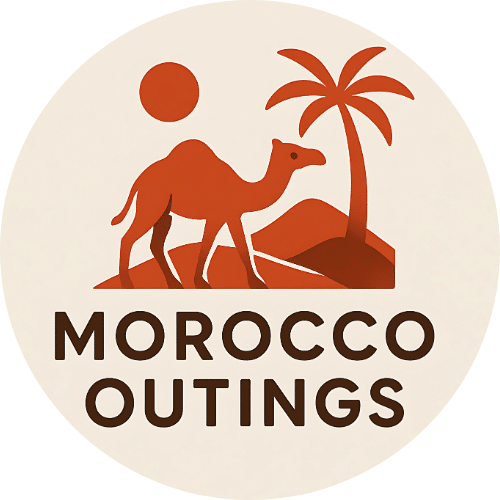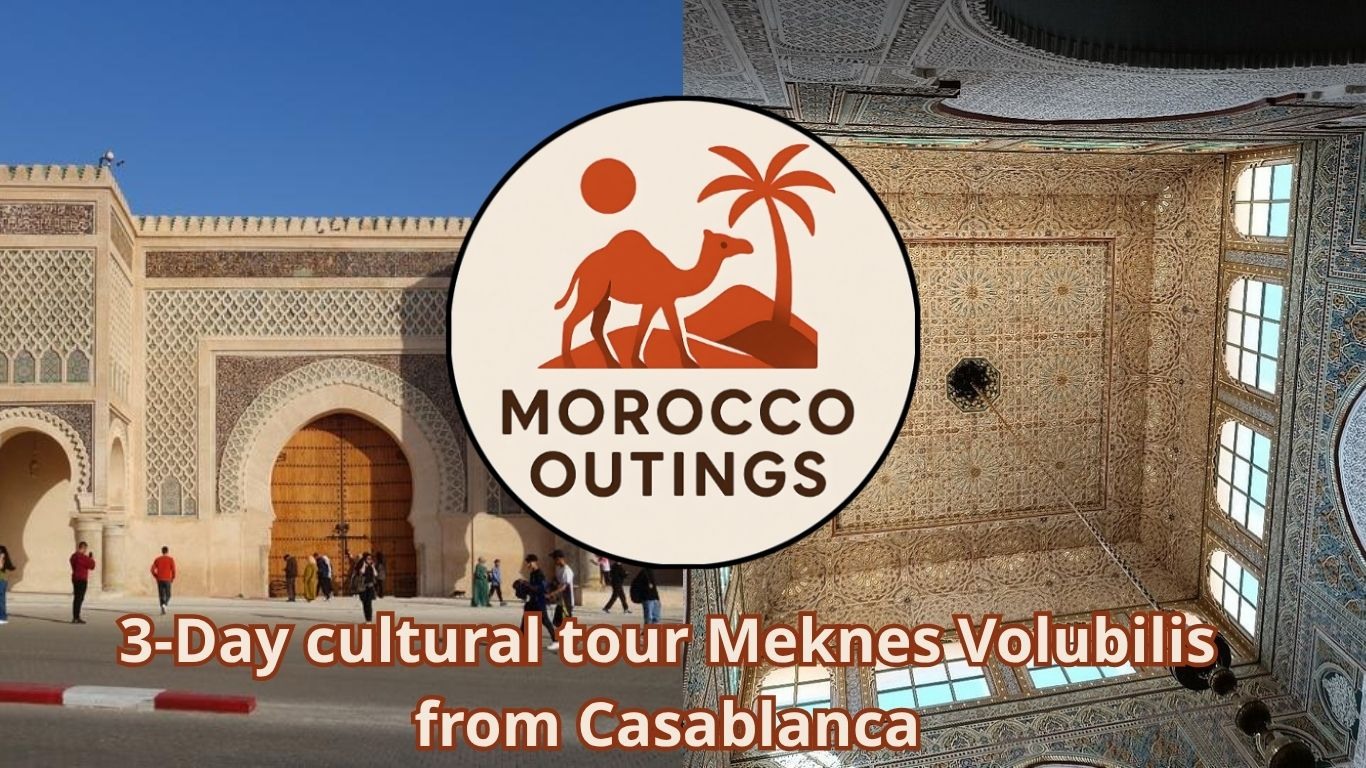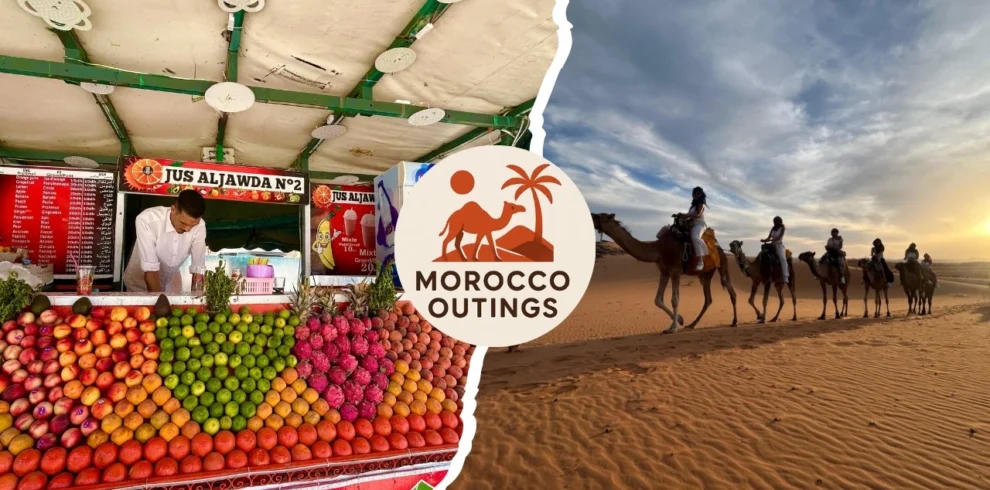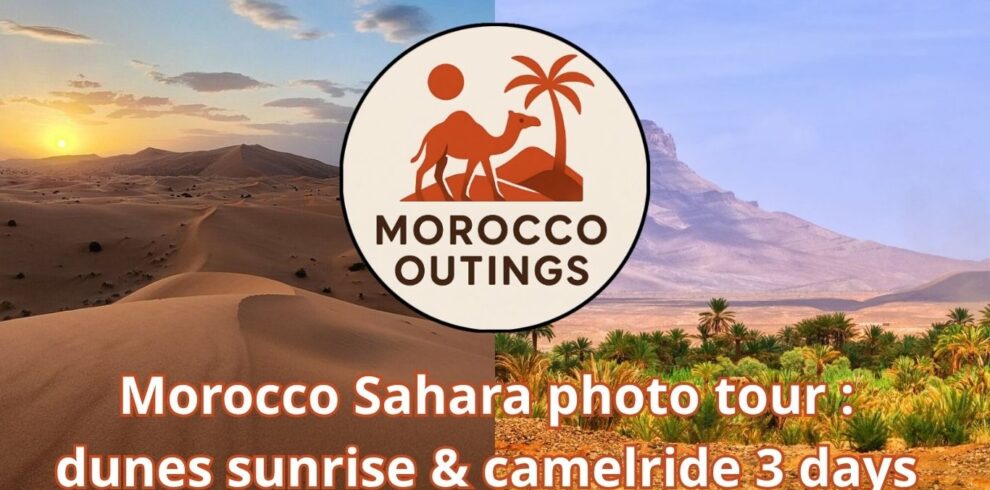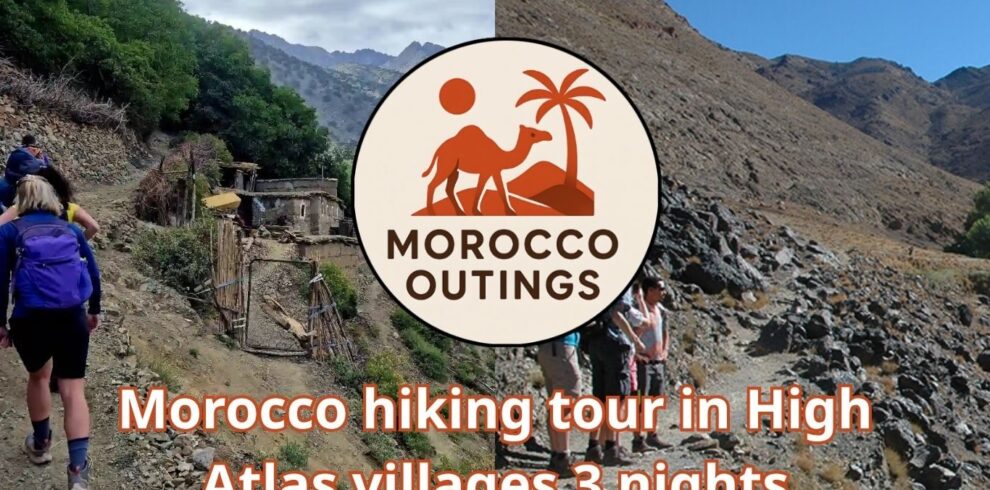Embark on an unforgettable journey through Morocco’s timeless heritage with our 3-Day Cultural Tour: Meknes & Volubilis from Casablanca. This carefully designed itinerary invites you to explore the essence of Morocco’s imperial cities, its deep-rooted traditions, and awe-inspiring landmarks. From the bustling modern energy of Casablanca, to the historical treasures of Rabat, the majestic architecture of Meknes, and the fascinating Roman ruins of Volubilis, this cultural adventure promises a truly immersive travel experience.
Your tour begins in Casablanca, Morocco’s cosmopolitan hub, where modernity meets history, setting the tone for an inspiring escape. As you move towards Rabat, the nation’s capital, you will discover a city rich in Andalusian and Islamic heritage, with highlights such as the Hassan Tower, the Mausoleum of Mohammed V, and the charming Oudayas Kasbah. Each stop brings you closer to understanding Morocco’s layered history and architectural brilliance.
The journey continues with an in-depth exploration of Meknes, one of Morocco’s four imperial cities. Known as the “Versailles of Morocco,” Meknes boasts monumental gates, impressive palaces, and the legacy of Sultan Moulay Ismail. Here, travelers will feel transported to another era, surrounded by grandeur and vibrant local culture. The highlight of the tour is a guided visit to Volubilis, a UNESCO World Heritage Site and one of the best-preserved Roman ruins in Morocco, where mosaics, columns, and ancient streets tell stories of civilizations long past.
Designed for travelers who value authenticity and comfort, this cultural tour from Casablanca combines history, architecture, and scenic drives across Morocco’s breathtaking landscapes. With expert guides, comfortable transport, and carefully chosen stops, this program offers the perfect balance of discovery and relaxation. By the end of this 3-day journey, you will carry with you lasting memories of Morocco’s imperial legacy and cultural treasures.
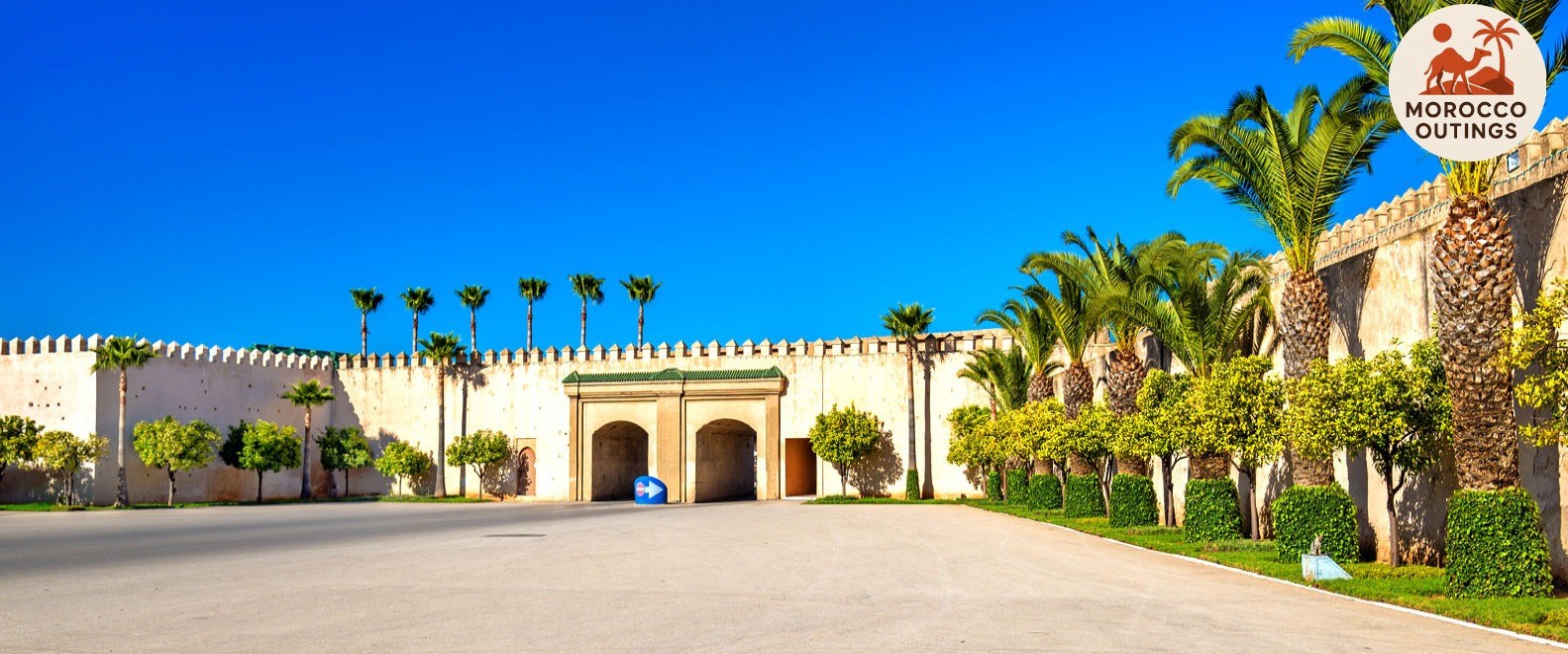
3-Day Cultural Tour: Meknes & Volubilis from Casablanca
Tour Overview
Discover Morocco’s imperial and Roman heritage with the 3-Day Cultural Tour: Meknes & Volubilis from Casablanca. Explore the majestic imperial city of Meknes, stroll through the ancient Roman ruins of Volubilis, and immerse yourself in the vibrant atmosphere of Meknes Medina. Visit monumental landmarks such as Bab Mansour Gate, the Mausoleum of Moulay Ismail, and the historic Royal Stables. This carefully curated itinerary blends history, culture, and breathtaking landscapes for an unforgettable Moroccan experience.
Detailed Itinerary
| Day | Activity | Details |
|---|---|---|
| Day 1 | Casablanca → Rabat → Meknes – From the Atlantic Coast to Imperial Grandeur | Morning departure from Casablanca, followed by a visit to the stunning Hassan II Mosque (exterior & corniche drive). Transfer to Rabat to explore the iconic Hassan Tower and the solemn Mausoleum of Mohammed V. Stroll through the historic Oudayas Kasbah with its charming Andalusian Gardens before continuing to Meknes for an overnight stay. |
| Day 2 | Meknes Discovery & Volubilis – Roman Heritage & Imperial Marvels | Explore Meknes visiting Bab Mansour Gate, the majestic Mausoleum of Moulay Ismail, and the historic Royal Stables. In the afternoon, enjoy a guided tour of the ancient Roman ruins of Volubilis, a UNESCO World Heritage Site, surrounded by picturesque landscapes. Return to Meknes for overnight accommodation in a traditional riad. |
| Day 3 | Meknes → Casablanca – Scenic Return via Middle Atlas Charm | Leisurely morning in Meknes with optional visits to the local souks or cultural walks. Begin the comfortable drive back to Casablanca, with potential photo stops at the Azrou Cedar Forest or along the scenic routes of the Middle Atlas Mountains. Arrive in Casablanca by evening, concluding your immersive Moroccan cultural adventure. |
What’s Included:
2 nights accommodation in Meknes and Fes riads
Private transportation with professional driver
Licensed English/French-speaking guide
Guided visits of Meknes, Volubilis, and Meknes Medina
Breakfasts and selected traditional meals
Entrance fees to listed sites
Pick-up and drop-off from Casablanca hotel or riad
What’s Not Included:
Flights to Morocco
Lunches, personal drinks, and snacks
Optional attractions or museum entrance fees
Personal expenses, souvenirs, and tips
Travel insurance
Day 1: Casablanca → Rabat → Meknes – From the Atlantic Coast to Imperial Grandeur
The first morning of your 3-day cultural tour from Casablanca begins with an early departure from your hotel or riad. As you leave behind the modern boulevards and palm-lined avenues of Morocco’s economic capital, your driver-guide provides insights into Casablanca’s significance as both a thriving business hub and a city that has preserved its cultural essence. The drive along the Atlantic Corniche immediately sets the scene for a day filled with history, architecture, and imperial grandeur.
Visit to Hassan II Mosque (Exterior & Corniche Drive)
Your first stop is the breathtaking Hassan II Mosque, an architectural marvel that has become Casablanca’s defining landmark. Commissioned by King Hassan II and completed in 1993, the mosque stands on a promontory overlooking the Atlantic Ocean, symbolizing the union of spirituality and Morocco’s maritime heritage. While this itinerary includes an exterior visit, the sheer scale of the building is enough to inspire awe: its minaret, at 210 meters, is the tallest in the world, and the structure can accommodate over 100,000 worshippers during major gatherings. From the esplanade, you can admire intricate zellij tilework, marble colonnades, and carved cedar ceilings, each detail crafted by Morocco’s finest artisans. A stroll along the Corniche provides an added dimension, with the ocean waves crashing beneath the mosque’s foundation, creating a surreal view where faith meets nature. For photography enthusiasts, this location offers one of the most striking panoramas in Morocco.
Transfer to Rabat – Morocco’s Political Capital
Leaving Casablanca behind, the road takes you northward along the Atlantic coastline towards Rabat, a UNESCO World Heritage city and Morocco’s administrative capital. The journey introduces travelers to Morocco’s geographic diversity—fertile plains, citrus orchards, and small fishing villages punctuate the drive. As you arrive, Rabat immediately reveals a calm elegance, with its well-maintained boulevards, Andalusian-style gardens, and sweeping views over the Bou Regreg River. Unlike the frenetic pace of Casablanca, Rabat offers a more measured rhythm, making it the perfect city to explore on a day trip from Casablanca before continuing inland.
Hassan Tower – The Unfinished Minaret of Ambition
The guided exploration of Rabat begins with the Hassan Tower, an iconic monument commissioned in the 12th century by Sultan Yacoub al-Mansour of the Almohad dynasty. Intended to be the largest mosque in the Islamic world, the project was halted after the Sultan’s death, leaving behind a towering minaret of red sandstone that rises 44 meters and an esplanade scattered with hundreds of unfinished marble columns. Standing in the shadow of the Hassan Tower, visitors are struck by its bold ambition and the sheer scale of the site, which speaks to the Almohads’ vision of projecting power and faith across the Maghreb. Today, it remains one of Morocco’s most recognizable landmarks, offering a direct link to the country’s medieval past and its architectural aspirations.
Mausoleum of Mohammed V – Morocco’s Modern History Enshrined
Adjacent to the Hassan Tower lies the magnificent Mausoleum of Mohammed V, a shrine that honors Morocco’s most beloved modern monarch. Constructed between 1961 and 1971, the mausoleum houses the tombs of King Mohammed V, credited with leading Morocco to independence, and his two sons, King Hassan II and Prince Moulay Abdallah. The building’s exterior is clad in white marble, topped with a traditional green-tiled roof that glistens under the Rabat sun, symbolizing Islam and Morocco’s royal legacy. Inside, the mausoleum dazzles visitors with its gilded cedar ceilings, intricate stucco work, and onyx embellishments, creating an atmosphere of reverence and solemnity. Guarded by Royal Guards in ceremonial attire, the site is both a spiritual landmark and a testament to Morocco’s modern identity. A guided visit brings depth to the experience, contextualizing the role of Mohammed V as the “Father of Independence” and highlighting the architectural fusion of tradition with 20th-century craftsmanship.
Oudayas Kasbah & Andalusian Gardens – A Riverside Sanctuary
Continuing your exploration, you enter the fortified quarter of the Oudayas Kasbah, one of Rabat’s most enchanting districts. Passing through the imposing Almohad gateway, Bab Oudayas, you step into a maze of narrow streets painted in vibrant blue and white tones that echo the charm of northern Morocco’s Chefchaouen. The kasbah exudes tranquility, with locals going about their daily routines while cats lounge lazily in sun-drenched alleys. Within its walls lies the Andalusian Gardens, a lush retreat of citrus trees, palms, and bougainvillea, designed during the French Protectorate in the early 20th century. The gardens provide a serene backdrop for relaxation and photography, while the kasbah’s elevated terraces open to sweeping views of the Atlantic Ocean and the neighboring city of Salé. This stop encapsulates the layered history of Rabat—part military fortress, part residential quarter, and part cultural sanctuary.
Arrival in Meknes – Evening in the Imperial City
By late afternoon, your cultural journey continues inland toward Meknes, another of Morocco’s historic imperial cities. The drive crosses fertile plains and rolling hills, revealing landscapes dotted with olive groves, vineyards, and small Berber villages that illustrate Morocco’s agricultural wealth. As you approach Meknes, monumental gates and fortified walls herald your arrival in the city once known as the “Versailles of Morocco” under the reign of Sultan Moulay Ismail in the 17th century. Upon check-in at a boutique riad or traditional hotel, you have the opportunity to relax or take a gentle evening stroll. As the sun sets, landmarks such as Bab Mansour Gate glow under golden light, while the medina begins to bustle with locals preparing for the evening. The first impressions of Meknes are a fitting close to a day that has spanned Morocco’s modern identity, medieval grandeur, and imperial ambition, setting the stage for the discoveries awaiting on the following day.
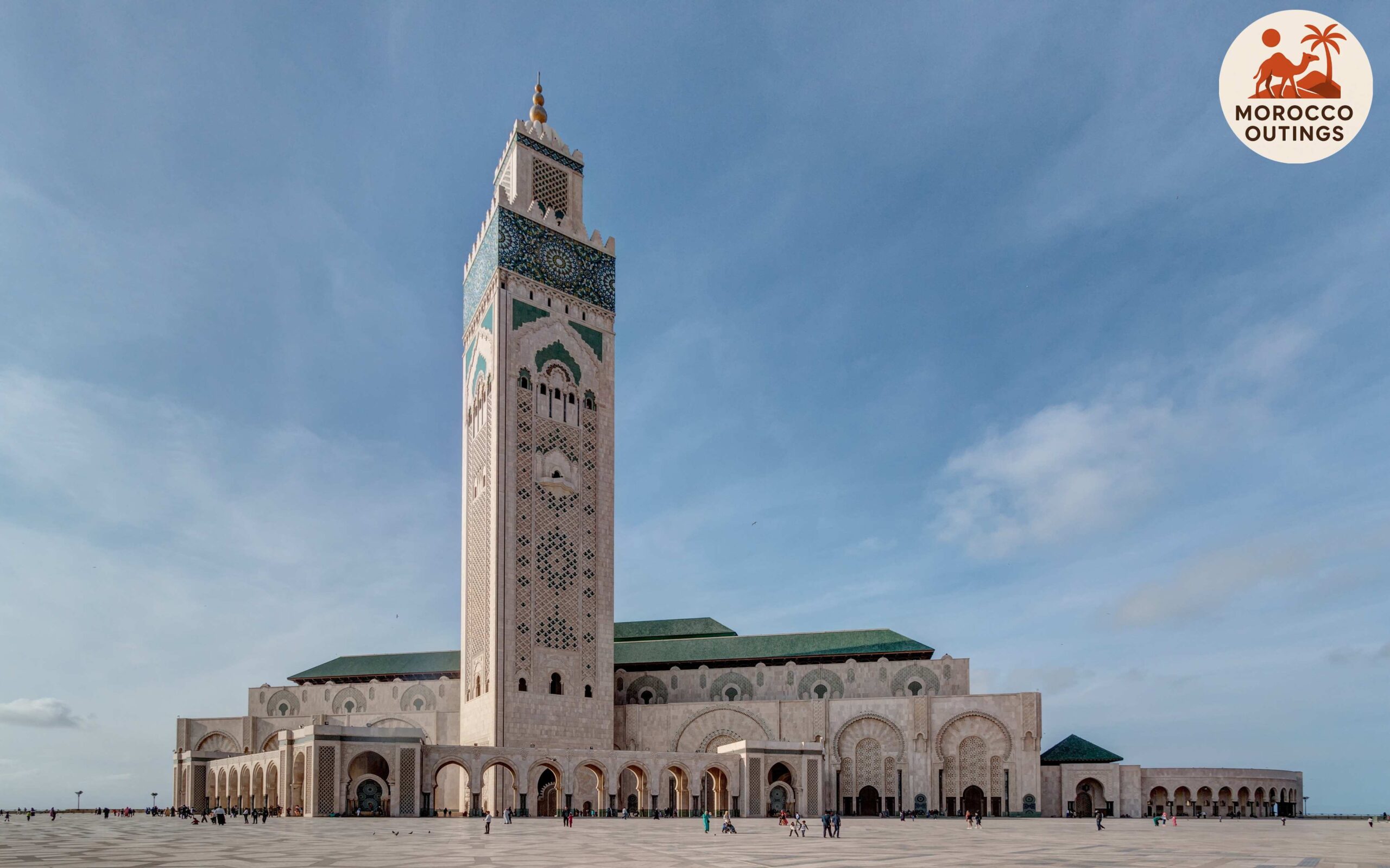

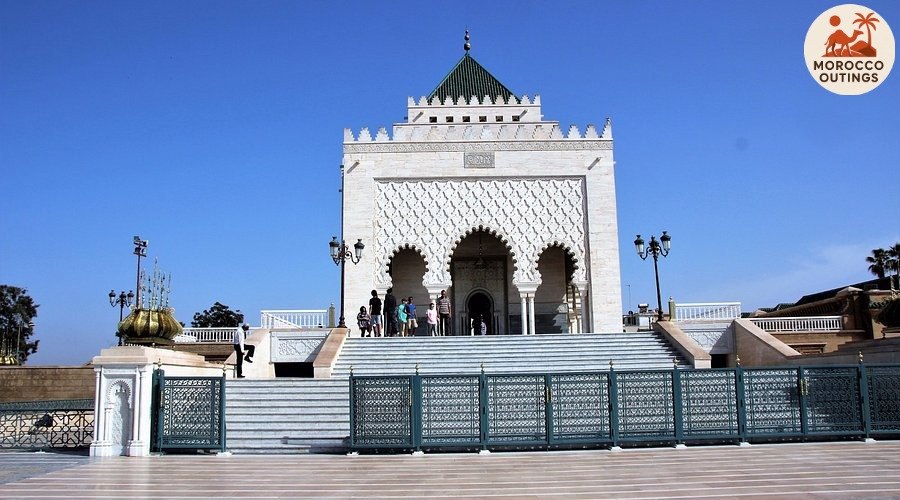

Day 2: Meknes Discovery & Volubilis – Roman Heritage & Imperial Marvels
Bab Mansour Gate – Monumental Entrance to Imperial Splendor
Your Meknes cultural tour begins with an exploration of the legendary Bab Mansour Gate, often regarded as one of the most beautiful gates in North Africa. Commissioned by Sultan Moulay Ismail and completed in the 18th century under his successor, this imposing gateway connects the imperial city with the old medina. Rising majestically with its horseshoe arches, zellij tile mosaics, and Quranic inscriptions, Bab Mansour reflects the Sultan’s ambition to immortalize his reign through monumental architecture. As you stand before its intricate green and white ceramic patterns, your guide reveals the history of how it once served as the ceremonial entrance to the royal kasbah. Photographers are particularly drawn to the gate’s symmetry and grandeur, capturing the essence of Meknes as an imperial city. This site not only marks the city’s identity but also introduces visitors to the rich blend of Moroccan and Andalusian artistic traditions.
Mausoleum of Moulay Ismail – Legacy of a Powerful Sultan
The next stop leads you to the Mausoleum of Moulay Ismail, one of the few sacred sites in Morocco open to non-Muslims, making it a highlight of any Meknes sightseeing itinerary. Sultan Moulay Ismail, who ruled for over 50 years, is remembered as both a formidable leader and a builder who transformed Meknes into a city of grandeur rivaling Versailles. The mausoleum embodies his legacy, with courtyards adorned in delicate zellij, carved stucco, and cedar woodwork. Entering the prayer halls, visitors encounter an atmosphere of solemn reverence, enhanced by the quiet beauty of fountains and gardens surrounding the complex. The tomb chamber itself, richly decorated with chandeliers and marble, offers a glimpse into the Sultan’s lasting influence on Morocco’s history. Your guide contextualizes Moulay Ismail’s achievements, from consolidating power to fortifying the empire, making this visit both a cultural and historical immersion.
Royal Stables & Heri es-Souani – Engineering Genius of the 17th Century
Continuing the imperial tour of Meknes, you proceed to the Royal Stables and Heri es-Souani granaries, architectural marvels that reveal the Sultan’s logistical genius. The stables were designed to house up to 12,000 horses, a symbol of military strength that allowed Moulay Ismail to protect and expand his empire. Walking through the vast vaulted chambers, visitors can still sense the grandeur of a space meticulously planned for efficiency and scale. Adjacent to the stables, the granaries of Heri es-Souani once stored immense supplies of grain and food to sustain both the army and the population during sieges. Ingenious ventilation and water distribution systems, still visible today, demonstrate advanced 17th-century engineering. Exploring this site connects travelers to the practical aspects of imperial ambition, complementing the more decorative monuments of Meknes with tangible evidence of strategic foresight.
Afternoon Excursion to Volubilis – Roman Heritage in Morocco
In the afternoon, your journey continues towards Volubilis, an ancient Roman city and one of Morocco’s most significant UNESCO World Heritage Sites. Surrounded by the rolling hills and olive groves of the Zerhoun region, the site presents a striking contrast to the Islamic monuments of Meknes. Founded in the 3rd century BC and flourishing under Roman rule, Volubilis became a prosperous provincial capital known for its trade in olive oil and wheat. Today, it stands as a remarkably preserved archaeological site, offering travelers a rare chance to walk through streets paved nearly two millennia ago.
Exploring the Ruins – Temples, Basilicas & Mosaics
Your guided tour of Volubilis Roman ruins unveils structures that once defined civic and cultural life. The grand Triumphal Arch of Caracalla, built in 217 AD, dominates the site, symbolizing Rome’s authority in North Africa. Nearby, the Basilica served as a center of administration and justice, while remnants of temples dedicated to Jupiter and Venus speak to the city’s religious diversity. Perhaps the most captivating features are the intricate Roman mosaics, which remain vivid despite centuries of exposure. Scenes of mythological figures, hunting expeditions, and everyday life offer a glimpse into the artistic achievements and domestic comforts of the Roman elite. Standing among these ruins, visitors often remark on the sense of timelessness, as if the voices of merchants and soldiers could still echo through the colonnaded streets.
Scenic Surroundings & Historical Reflection
Beyond its monuments, Volubilis captivates with its tranquil landscapes. Rolling fields dotted with wildflowers in spring and golden light in summer create a poetic setting for reflection. Your guide shares stories of how this city gradually declined after the Roman Empire’s retreat and was later rediscovered by 19th-century explorers. This balance of grandeur and ruin makes Volubilis both a historical treasure and an evocative reminder of the passage of time. For travelers interested in Morocco’s cultural heritage, it offers an unmissable connection between the country’s Roman past and its later Islamic dynasties.
Evening Return to Meknes
After a full afternoon among the ruins, you return to Meknes for the evening. As the sun sets, the city’s fortified walls glow in amber tones, and locals gather in bustling squares. This evening offers leisure time to relax at your riad or explore Meknes by night, where traditional restaurants serve local delicacies such as mechoui lamb and mint tea. The day closes with the feeling of having experienced two layers of Morocco’s history: the imperial splendor of the 17th century and the enduring heritage of ancient Rome.
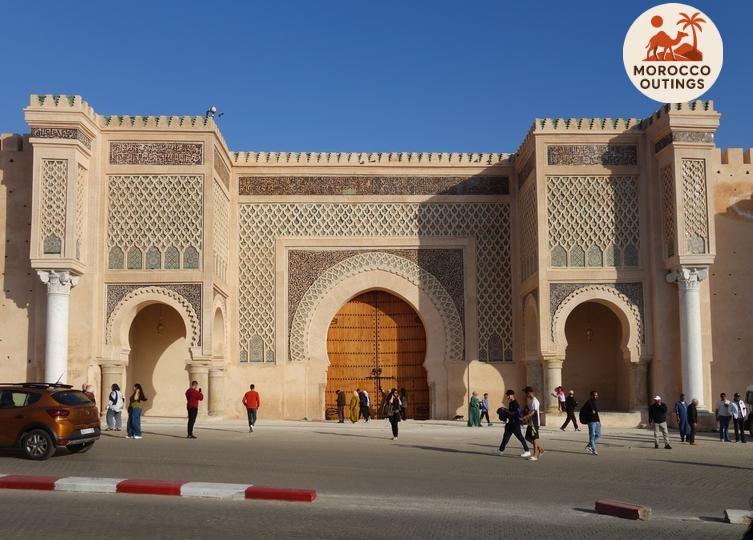
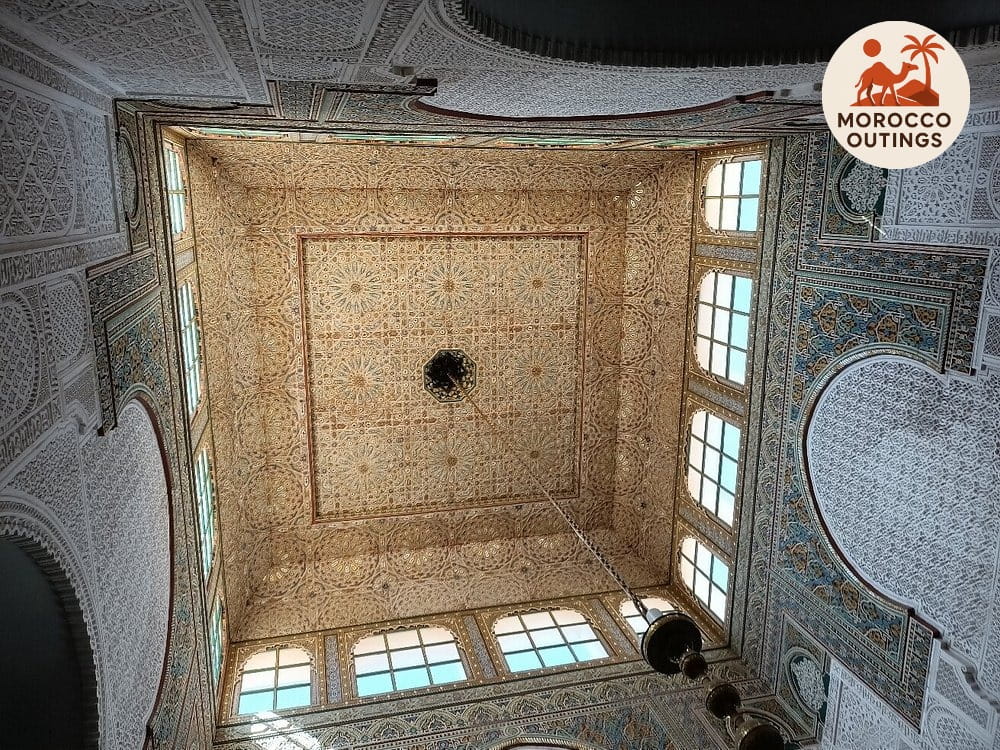
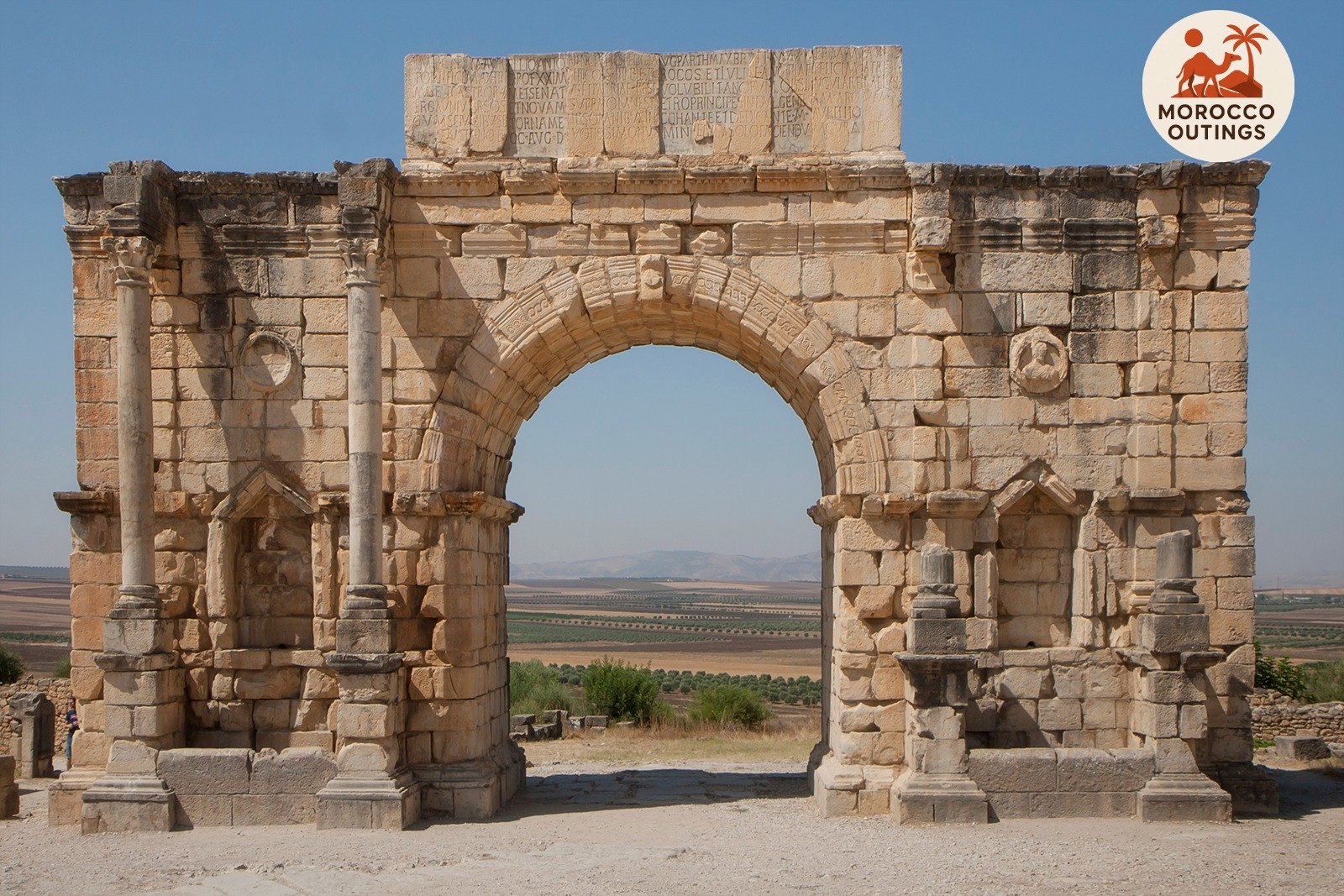
Day 3: Meknes → Casablanca – Scenic Return via Middle Atlas Charm
A Morning of Leisure in Meknes
Your final day begins with a tranquil morning in Meknes, offering the perfect opportunity to savor the city’s quieter rhythm before returning to Casablanca. After two days of exploration filled with historical sites and Roman marvels, this morning is designed for a slower pace. Travelers may enjoy breakfast at their riad or hotel courtyard, often served with traditional Moroccan breads, honey, and mint tea that reflect the city’s refined gastronomy. The early hours allow you to absorb the atmosphere of Meknes, listening to the distant call of vendors and the chiming of horse-drawn carriages—reminders of the city’s enduring imperial charm.
Exploring the Souks of Meknes
For those eager to engage with authentic Moroccan life, the option of visiting the souks of Meknes offers an unforgettable cultural immersion. These labyrinthine markets are alive with colors and textures: stalls displaying saffron, cumin, and cinnamon fill the air with aromas, while artisans craft leatherwork, brass lanterns, and handwoven rugs in open workshops. Walking through the souks provides the chance to interact directly with merchants who often share stories about their trade passed down through generations. Photography enthusiasts will find endless inspiration in the play of light across spice pyramids and intricately painted ceramics, while travelers seeking souvenirs can secure one-of-a-kind keepsakes that embody Moroccan artistry.
Cultural Walk Through Meknes
Alternatively, travelers may embark on a cultural walk through Meknes, guided by a local expert. This stroll unveils lesser-known corners of the city, such as small madrassas, fountains, and hidden courtyards that reflect Andalusian influence in design. The walk emphasizes the city’s balance between grandeur and intimacy, offering moments to appreciate details that might have been missed on the previous day’s sightseeing. Whether pausing at a traditional bakery where clay ovens bake khobz (round Moroccan bread), or stepping into a tiled courtyard shaded by citrus trees, the experience enriches the traveler’s understanding of Meknes’ layered history and daily rhythm.
Scenic Drive Through the Middle Atlas
By late morning, the group begins the scenic return drive towards Casablanca, passing through the Middle Atlas Mountains. This route is celebrated for its diverse landscapes—rolling hills that gradually rise into cedar-covered slopes, valleys dotted with Berber villages, and plateaus grazed by flocks of sheep. Unlike the high-speed highways, the Middle Atlas road offers a tapestry of Moroccan countryside, where travelers witness the harmony between natural beauty and traditional lifestyles. Along the way, panoramic views invite frequent photo stops, allowing the group to capture the serenity of the region’s landscapes. The drive is comfortable and unhurried, ensuring travelers can fully appreciate the journey itself as part of the experience.
The Enchanting Azrou Cedar Forest
A highlight of the return journey is a potential stop at the Azrou cedar forest, one of the Middle Atlas’ most enchanting natural attractions. Towering centuries-old cedar trees create a majestic canopy, offering shade and a refreshing pause. The forest is also home to the famous Barbary macaques, playful monkeys that often approach visitors, adding a touch of wilderness to the trip. Strolling briefly under the cedar branches, travelers can breathe in crisp mountain air, distinctly cooler and fresher than the lowland cities. This natural interlude not only breaks the drive but also deepens the traveler’s connection to Morocco’s ecological diversity—an often-overlooked aspect of the country’s appeal.
Return to Casablanca
As the afternoon progresses, the road gradually flattens, leading travelers back towards the Atlantic plains and the cosmopolitan heart of Casablanca. Approaching the city, the skyline of modern high-rises contrasts with the rural scenery left behind, symbolizing Morocco’s fusion of tradition and modernity. Depending on arrival time, there may be opportunities for final photo stops or simply a comfortable drive straight to the hotel or airport. The drop-off is scheduled for the evening, concluding the 3-day cultural journey from Casablanca to Meknes and Volubilis. Travelers are left with a sense of having experienced Morocco’s imperial past, Roman heritage, and natural wonders in one curated itinerary.
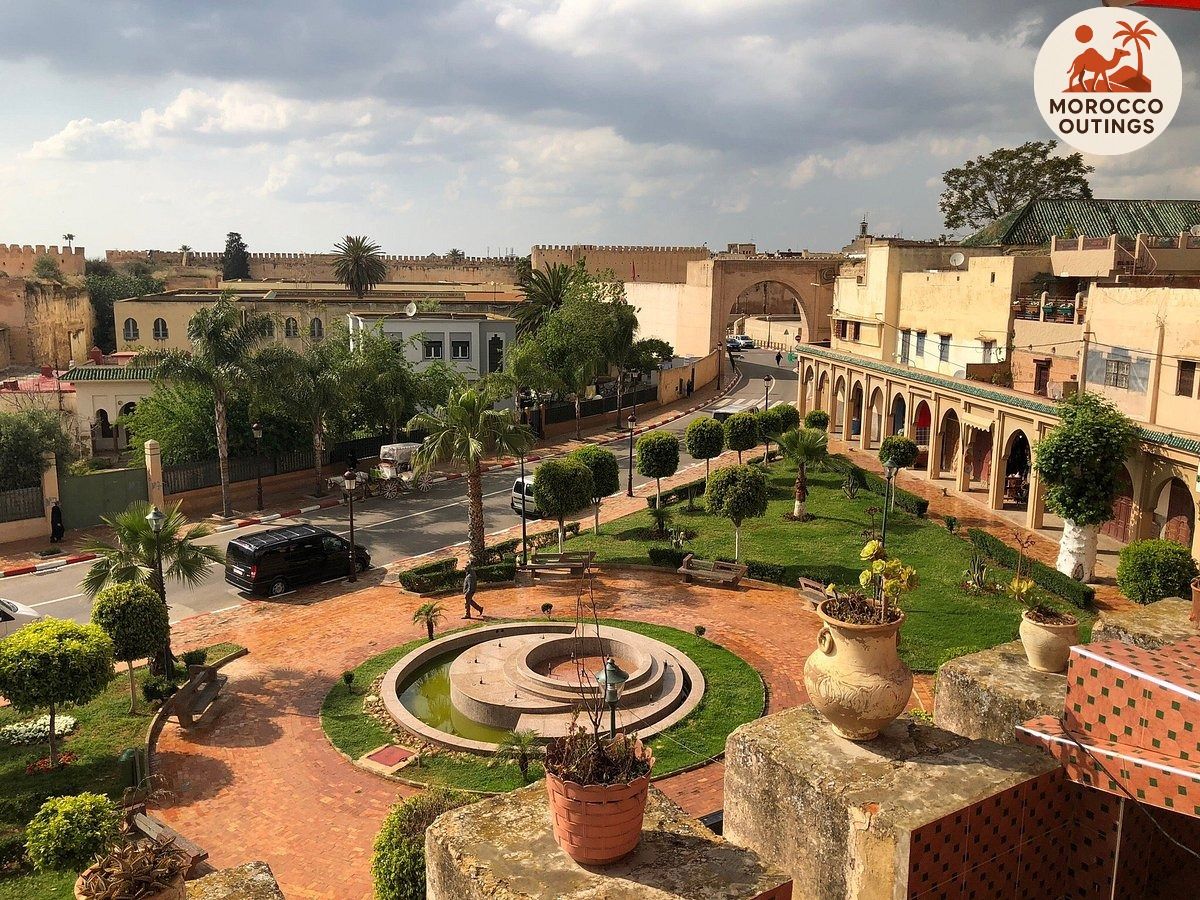
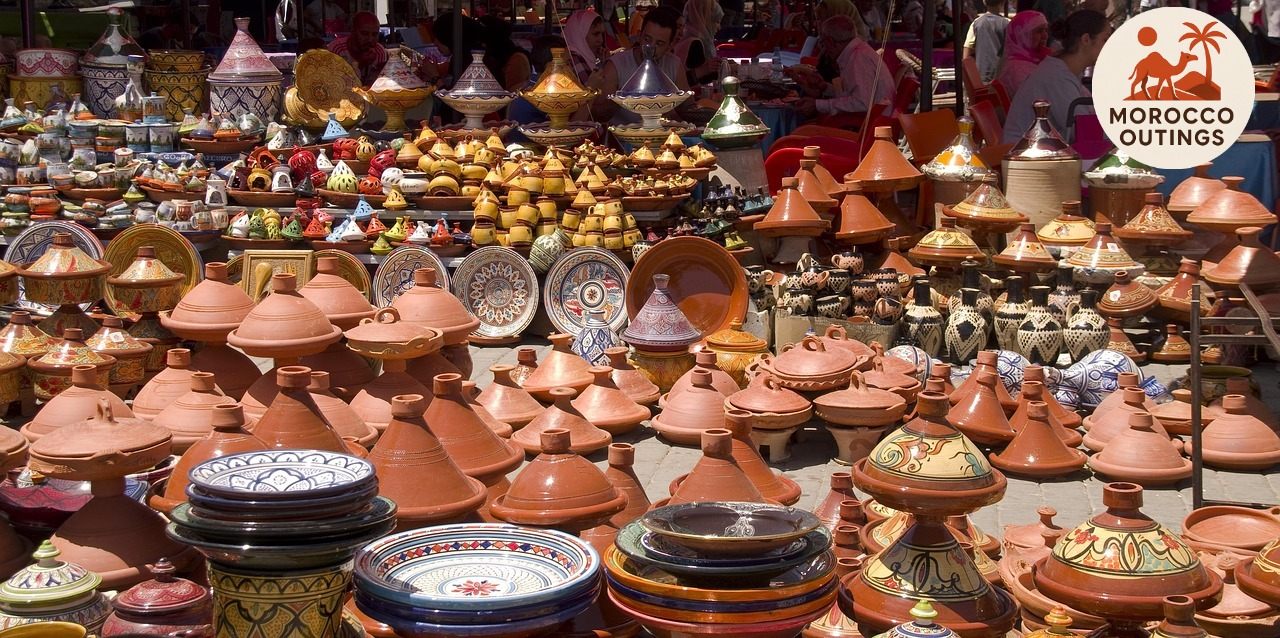
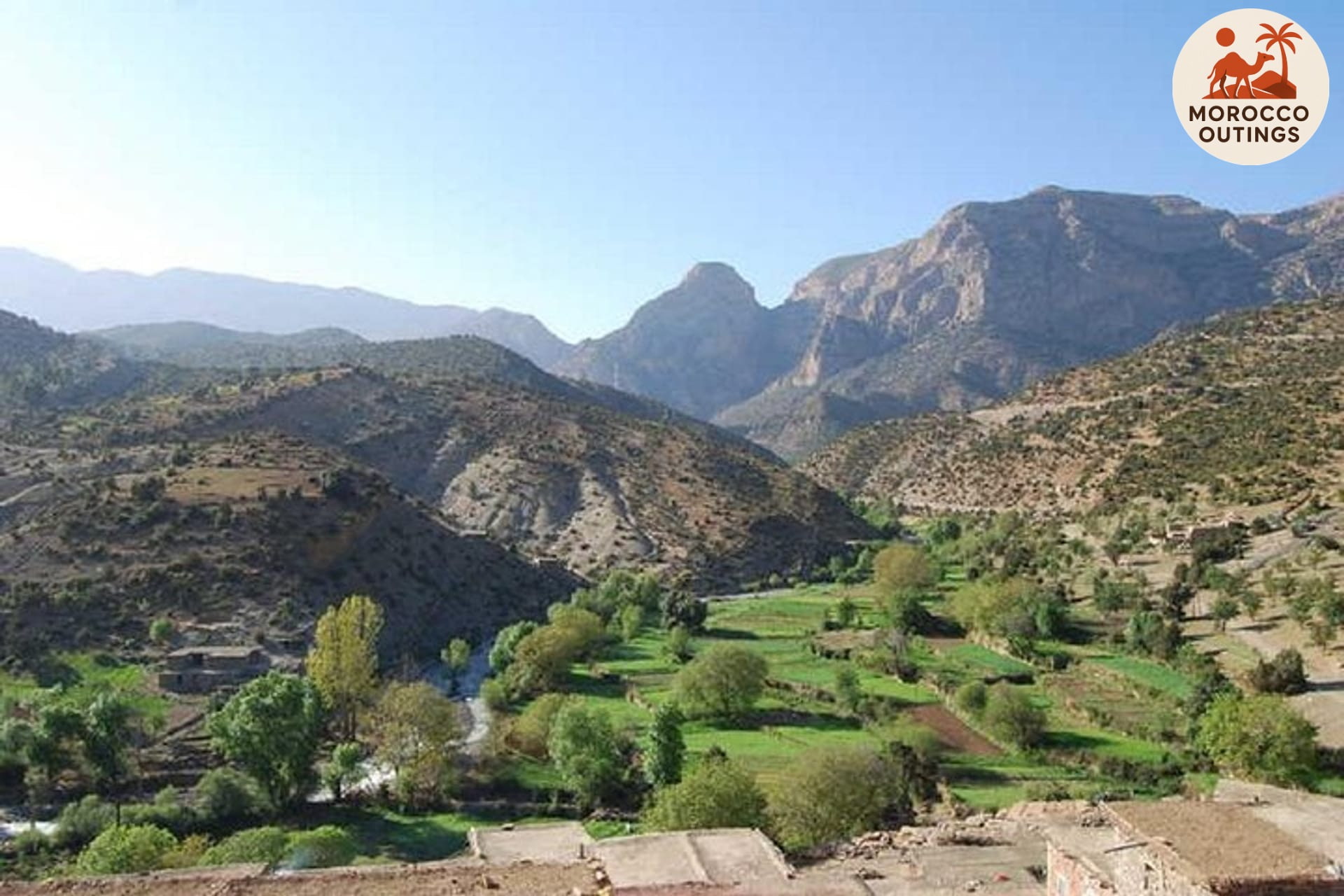
Travel Tips & Guidelines
-
Start the Day Light: Enjoy a balanced breakfast at your riad or hotel in Meknes and keep a bottle of water handy for the journey.
-
Souk Essentials: If you choose to explore Meknes’ souks, carry small change and practice friendly bargaining when buying souvenirs.
-
Comfortable Footwear: Whether strolling through Meknes or stopping at the Azrou Cedar Forest, wear shoes suitable for uneven paths.
-
Photography Ready: The Middle Atlas landscapes offer breathtaking panoramas—make sure your camera or phone is fully charged.
-
Respect Nature & Wildlife: If you encounter the Barbary macaques in Azrou, enjoy observing them but avoid direct feeding to protect their natural habits.
-
Layered Clothing: The Middle Atlas can be cooler than Casablanca—pack a light jacket for comfort during photo stops.
-
Snacks for the Road: Bring along local treats like dates or dried fruits, as shops may be limited along the scenic drive.
-
Stay Connected: Charge your phone and carry a power bank since some mountain areas may have limited network coverage.
-
Cultural Etiquette: Always ask politely before taking photos of locals in markets or villages—respect is highly valued.
-
Final Drop-off Planning: Confirm whether your final drop-off will be at your Casablanca hotel or the airport, ensuring a smooth end to your journey.
What’s Included:
-
2 nights accommodation in charming riads in Meknes
-
Daily breakfast and 1 traditional Moroccan dinner
-
Private, air-conditioned transportation with professional driver
-
Licensed English/French-speaking guides during city tours
-
Guided visits to Rabat, Meknes, and Volubilis
-
Entrance fees to all listed monuments and historical sites
-
Hotel or airport pick-up and drop-off in Casablanca
-
Bottled water during transfers
What’s Not Included:
-
International flights to and from Morocco
-
Lunches, personal drinks, and snacks
-
Optional attractions, museum entrance fees, or extra activities
-
Personal expenses, souvenirs, and tips
-
Travel insurance
Reserve Your 3-Day Cultural Adventure Today!
Don’t miss the chance to explore Morocco’s imperial heritage and timeless Roman ruins with our 3-Day Cultural Tour: Meknes, Volubilis & Fes from Casablanca. Immerse yourself in the grandeur of Meknes, walk through ancient streets of Fes Medina, and marvel at the UNESCO-listed Volubilis.
Secure your spot now for a seamless journey with private transportation, expert guides, and authentic Moroccan experiences. Limited availability – book today and let us craft memories that will last a lifetime!
